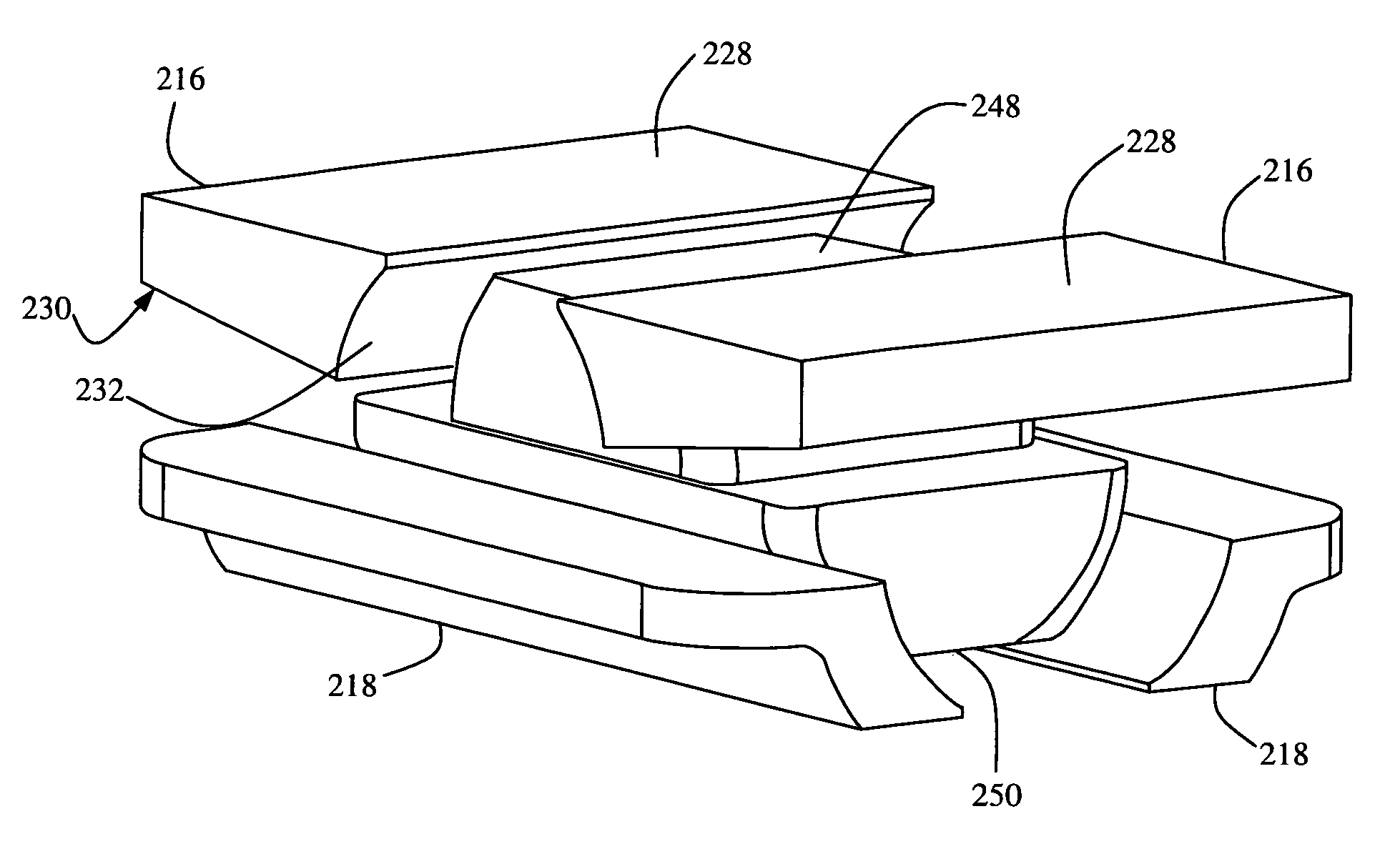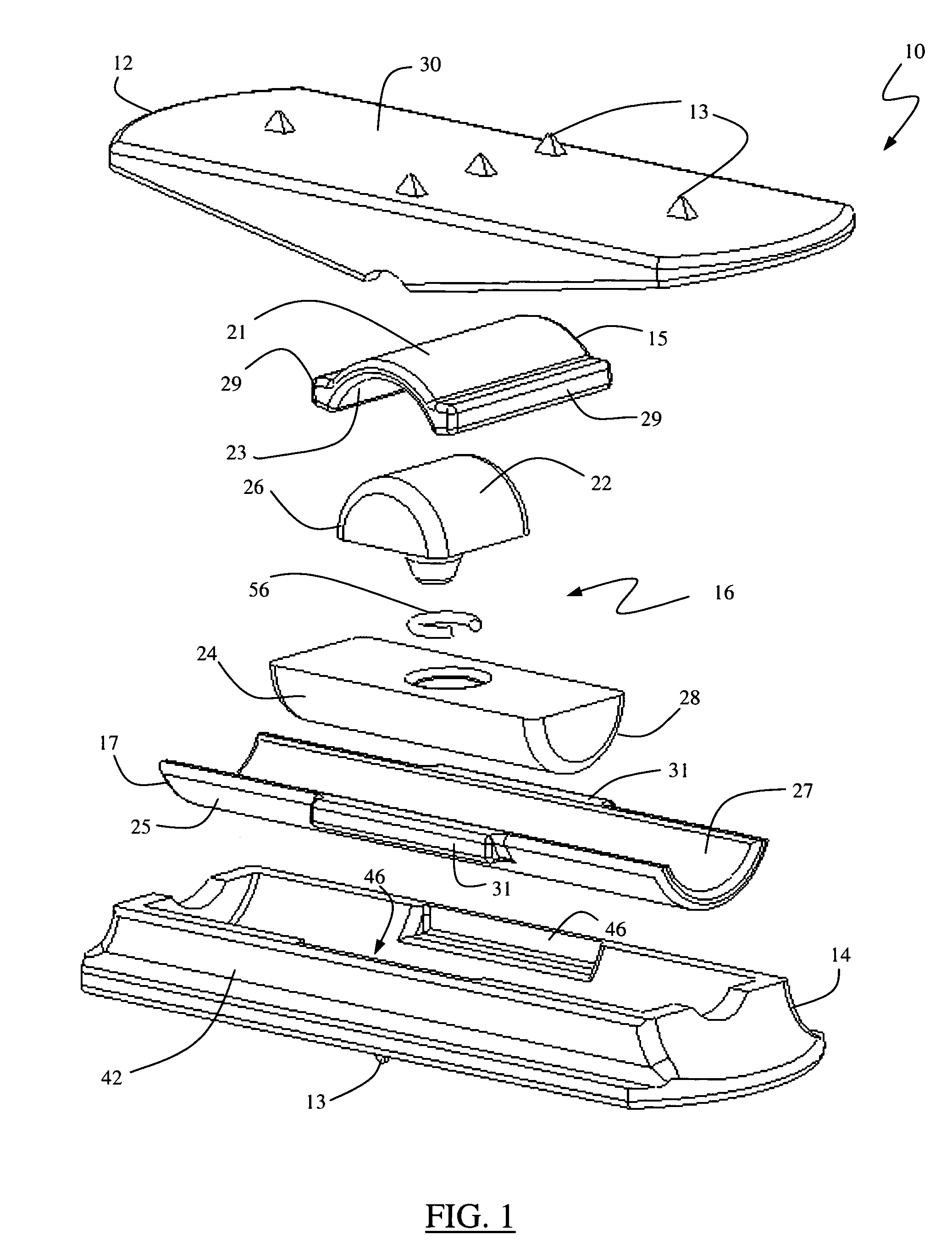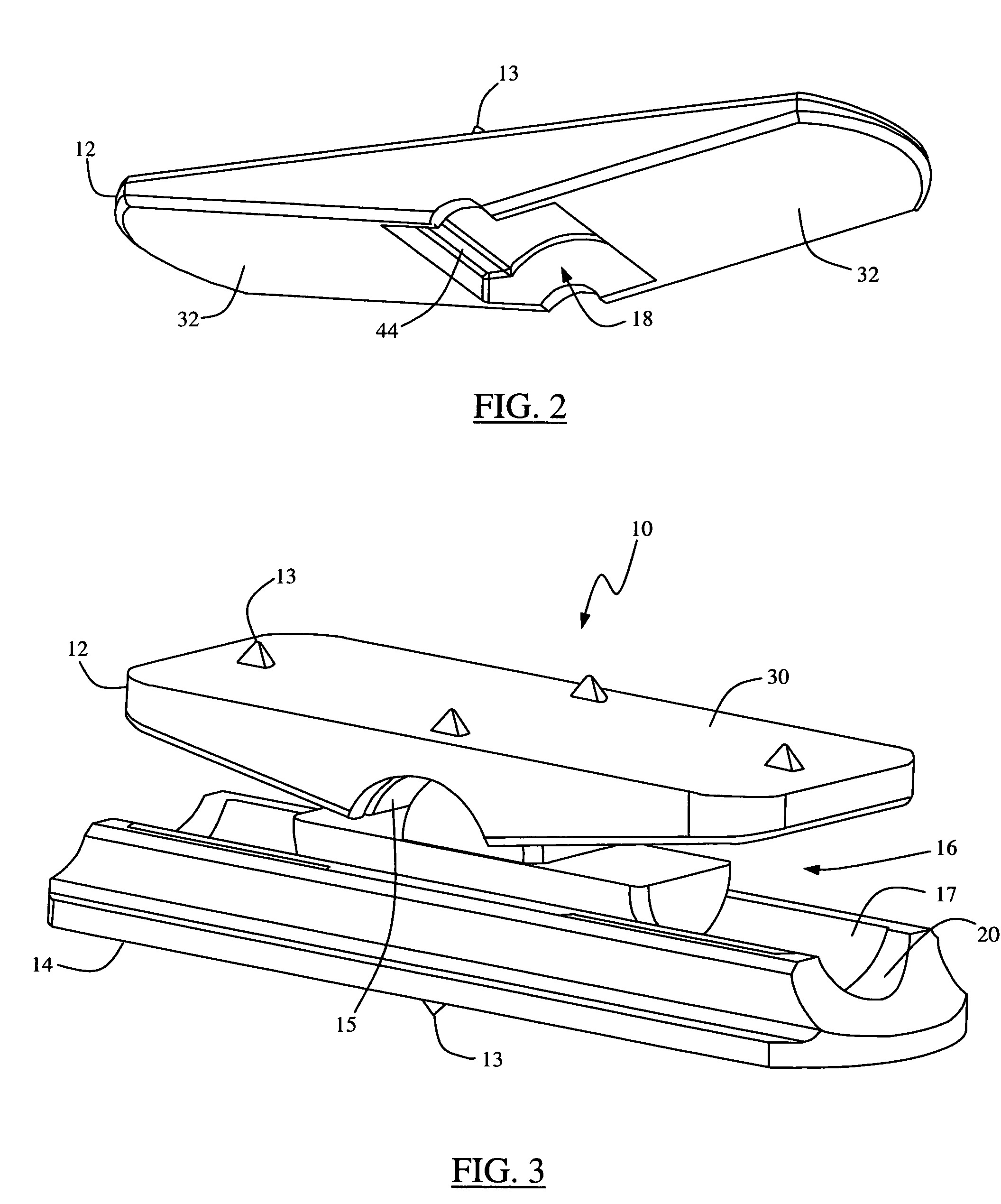Total disc replacement system and related methods
a total disc and disc replacement technology, applied in the field of spinal surgery, can solve the problems over-distraction of vertebral endplates, anchor plates dislocated from vertebral end plates, etc., and achieve the effect of reducing the overall profile of total disc replacement system
- Summary
- Abstract
- Description
- Claims
- Application Information
AI Technical Summary
Benefits of technology
Problems solved by technology
Method used
Image
Examples
first embodiment
[0050]FIGS. 1-5 illustrate a total disc replacement (TDR) system 10 according to the present invention. The TDR system 10 includes a first anchor plate 12, a second anchor plate 14, a pair of intradiscal troughs or liners 15, 17, and an intradiscal element 16. Each anchor plate 12 and 14 is equipped with a plurality of anchor elements 13 and a semi-cylindrical surface 18, 20, respectively. The first intradiscal liner 15 includes a first surface 21 and a second surface 23, each having a generally arcuate cross-section. The first surface 21 is dimensioned to fit into the semi-cylindrical surface 18 of the first anchor plate 12, allowing the first intradiscal liner 15 to form a protective barrier between intradiscal element 16 and first anchor plate 12, thereby reducing wear. The second intradiscal liner 17 includes a first surface 25 and a second surface 27, each having a generally arcuate cross-section. The first surface 25 is dimensioned to fit into the semi-cylindrical surface 20 o...
second embodiment
[0069]FIG. 13 illustrates a total disc replacement (TDR) system 110 according to the present invention. The TDR system 110 is designed to operate in the same fashion as the TDR system 10 shown and described above, except that the TDR system 110 is particularly suited for anterior access introduction into the spine. (For the sake of clarity, all features or components in common with the TDR system 10 will be numbered identically to those features, all features similar in function but different in form will be numbered +100, and reference can be made to the discussion above regarding the TDR system 10, rendering a repeat discussion unnecessary and optional). The central distinction between TDR system 10 and TDR system 110 is that the first and second anchor plates 112, 114 each have a generally cylindrical shape. Dimensioning the first and second anchor plates 112, 114 in this fashion is advantageous when a minimal access surgical corridor is not required. Related to the generally cyl...
third embodiment
[0070]FIGS. 14-18 illustrate a total disc replacement (TDR) system 210 according to the present invention. The TDR system 210 includes a first anchor plate 212, a second anchor plate 214, a first pair of intradiscal liners 216, a second pair of intradiscal liners 218, and an intradiscal element 220. Each anchor plate 212, 214 is equipped with a plurality of anchor elements 222 and a cutout region 224, 226, respectively. The first pair of intradiscal liners 216 each have a first surface 228 dimensioned to fit into the cut-out region 224 of the first anchor plate 212, a second generally planar surface 230, and a semi-cylindrical articular surface 232 dimensioned to articulate with the intradiscal element 220. The second pair of intradiscal liners 218 each have a first surface 234 dimensioned to fit into the cut-out region 226 of the second anchor plate 214, a second generally planar surface 236, and a semi-cylindrical articular surface 238 dimensioned to articulate with the intradisca...
PUM
 Login to View More
Login to View More Abstract
Description
Claims
Application Information
 Login to View More
Login to View More - R&D
- Intellectual Property
- Life Sciences
- Materials
- Tech Scout
- Unparalleled Data Quality
- Higher Quality Content
- 60% Fewer Hallucinations
Browse by: Latest US Patents, China's latest patents, Technical Efficacy Thesaurus, Application Domain, Technology Topic, Popular Technical Reports.
© 2025 PatSnap. All rights reserved.Legal|Privacy policy|Modern Slavery Act Transparency Statement|Sitemap|About US| Contact US: help@patsnap.com



